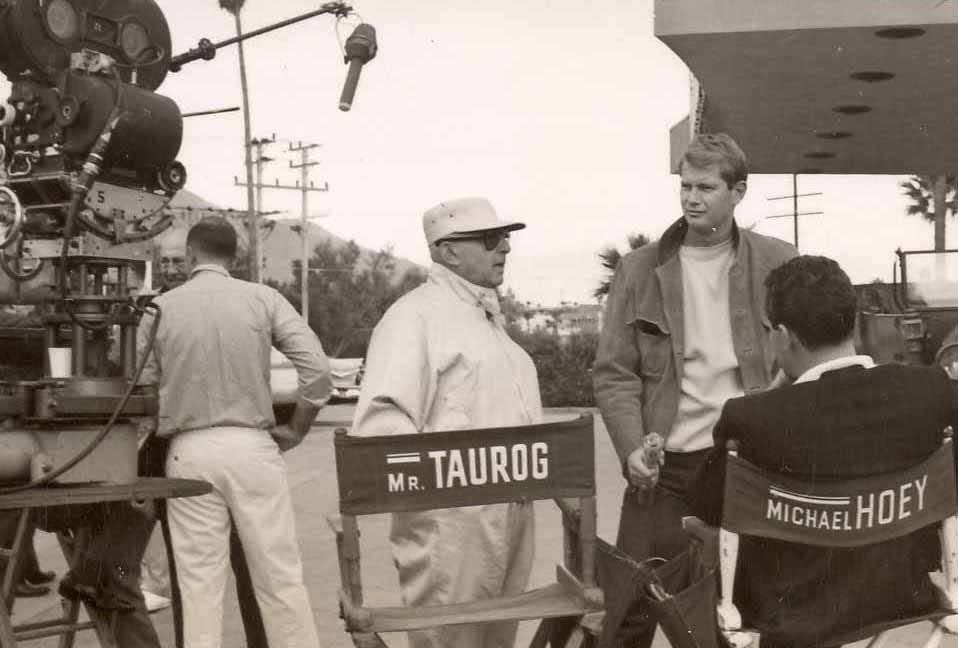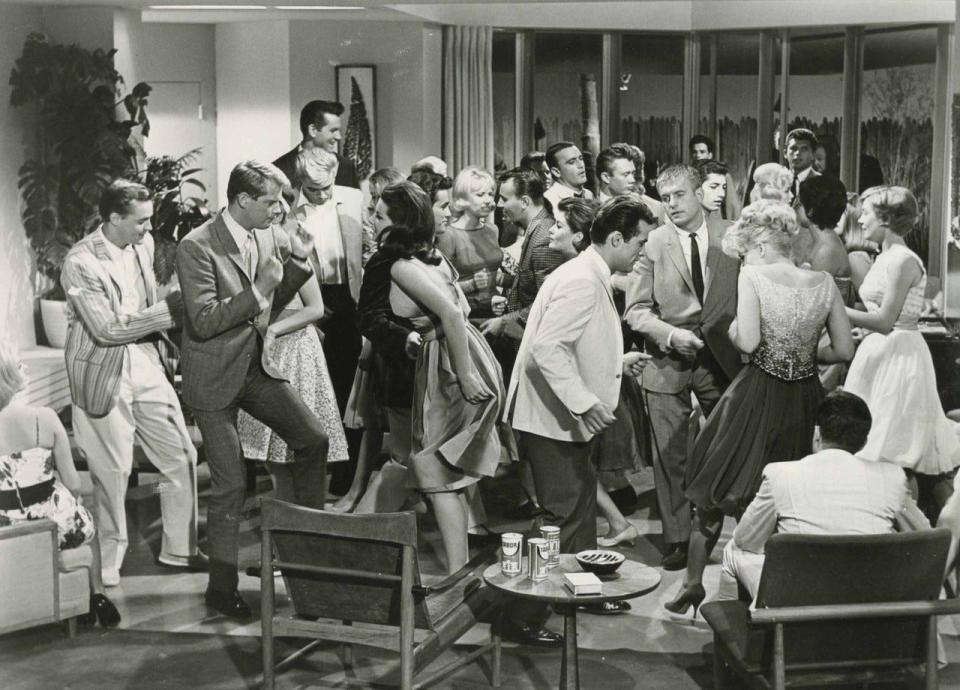History: When the city decided whether to allow filming of a risqué ‘Palm Springs Weekend’

- Oops!Something went wrong.Please try again later.
The predicament facing the city council was highly unusual. Decide to cooperate with the filming of a movie that would paint the town as a destination for hijinks and hilarity or try to stop it altogether.
The newspaper covered the controversy. “The picture is based on the annual Easter Week invasion of Palm Springs by vacationing college and high school students. Both the council and chamber (of commerce) had protested and voted against giving the actors and film crews any cooperation…indications were that both bodies may reconsider their protests.”
Councilman George Beebe was sure about the refusal: “The horrible part of it … is that it is actually going to tell the truth of what goes on here around Easter. These kids spoil the end of the season and we don’t want to do anything to encourage more of them to come.”
After some wrangling, rewriting and lobbying, the newspaper reported the difficult decision: “Movie making was under way at two Palm Springs locations today in production of a Warner Bros. film featuring the resort area and its attractions, a vehicle title ‘Palm Springs Weekend.’”
“Camera work got off to a fast start Tuesday after the city council decided Monday cooperation in the production would be the best course for Palm Springs.”
“Plans for the film production brought objection from both the city council, other city officials and the chamber of commerce several weeks back when a preliminary script was submitted that allegedly stressed to highly the teenage hijinks during Easter week and presented other problems. However, script revisions and a letter from the movie company brought tacit approval from the council Monday.”
And the filming began immediately in mid-February 1963. The idea for the film came from none other than studio head Jack Warner himself. As a homeowner in Palm Springs, Warner deeply understood the appeal of the desert, especially in springtime. And he’d seen the recent success of teeny-bopper beach movies and wanted to replicate it with a twist: same sand, but mountain instead of ocean backdrop.

The opposition to the movie was surprising to the studio. The film would make Palm Springs even more famous that it already was, and would drive tourism. The idea of teenagers spending spring break in Palm Springs wasn’t new. The movie would just expound on that.
The studio sprang into action, writing a letter to the council. “As you know, Warner Bros. Studios have been completing arrangements for the filming of scenes in Palm Springs for our picture ‘Palm Springs Weekend’ which is being produced in Technicolor with an outstanding cast of players, including Troy Donahue, Connie Stevens, Ty Hardin, Bob Conrad and others. We intend to capture the beauty and attractiveness of the Springs with its palm-lined streets, the desert, distinctive mountain backgrounds, luxurious hotels, pools, recreational features; and above all, your magnificent winter sunshine and constant climate.”
The letter continued, “Palm Springs, of course, is already world renowned; however, we are certain that our picture, by reflecting the best features of Palm Springs, will further contribute to the world’s awareness of, and interest in, your city as we distribute in practically every major country in the world.”
If that wasn’t enough, the letter emphasized the studio’s local connections. “As you know, many of us here at Warner Bros. have homes in Palm Springs, and are a part of the community, closely associated with all the city’s interests, welfare and civic activities; and please be assured it is our earnest desire to depict Palm Springs in a warm, friendly and most favorable manner.”
“For instance, Norman Taurog, who is directing the film and noted for the fine, wholesome pictures he has produced, has been associated with the Springs for a number of years as a hotel owner, resident and a member of your community. He has the best interests of Palm Springs at heart, as have we all. Produced in the best taste, ‘Palm Springs Weekend’ will reflect Warner Bros’ long established policy of ‘combining good picture making with good citizenship’ — an accolade bestowed upon the studio by the New York Times — and we, and I particularly, would be most grateful or your cooperation in aiding us to film Palm Springs in the most favorable possible manner.” The letter was signed by Vice President Stephen B. Trilling.
The $1.5 million picture opened in November of 1963, now six decades ago, to modest success but took on a life of its own after airing regularly on TV. Palm Springs would become more and more associated with mischievous escapades of the teen set in the sunny small town due to the movie.
Disappointingly, the film is staged to a great degree on a set, but the interspersed location shots are compelling. The seemingly endless sand dunes stop only because of the sheer mountain. The deep azure blue of the sky makes for an optimistic mood. Palm Springs in 1963 was wide-open spaces, low-slung houses, lush landscaping and spacious streets.
For the extensive car chase scenes an “on purpose wreck” was set up off Rio Del Sol near Ramon Road in the sand dunes. Even the shrubbery near the wrecked car was staged. Besides the imposing mountain in the distance, it’s hard to tell when watching exactly where the scene was.
However, two specific sites are easily recognizable: the Riviera Hotel (now Margaritaville Resort) figures in a poolside luncheon scene and a more obscure motel, the Desert Palms Inn on Jones Road in Cathedral City is the purported site of the teenagers’ accommodations.
Built in 1959, the Desert Palms Inn had an elongated gable roof with massive clerestory windows typical of midcentury architecture in the desert. The façade is pictured prominently in the film and is extant. The real resort had a whimsical, keyhole-shaped pool is also still there but which was replaced in the film by a soundstage concoction. The surrounding grove of date palms though is long gone. And it is no longer a motel, but a rehab facility.
Stars Troy Donahue and Connie Stevens turned up for the annual charity Palm Springs Police Show for several years making good the film’s commitment to helping the community, but the fears about the movie encouraging more spring break revelries, some not altogether wholesome, turned out to be absolutely founded.
The movie was advertised as “That once-a-year vacation fling when American youth goes wild and takes over America’s swankiest playground.” In real life, the boisterous antics continued until they escalated beyond mere fun and a different city council and Mayor Sonny Bono put an end to the spring break tradition.
Tracy Conrad is president of the Palm Springs Historical Society. The Thanks for the Memories column appears Sundays in The Desert Sun. Write to her at pshstracy@gmail.com.
This article originally appeared on Palm Springs Desert Sun: History: How movie hijinks of ‘Palm Springs Weekend’ came to be

